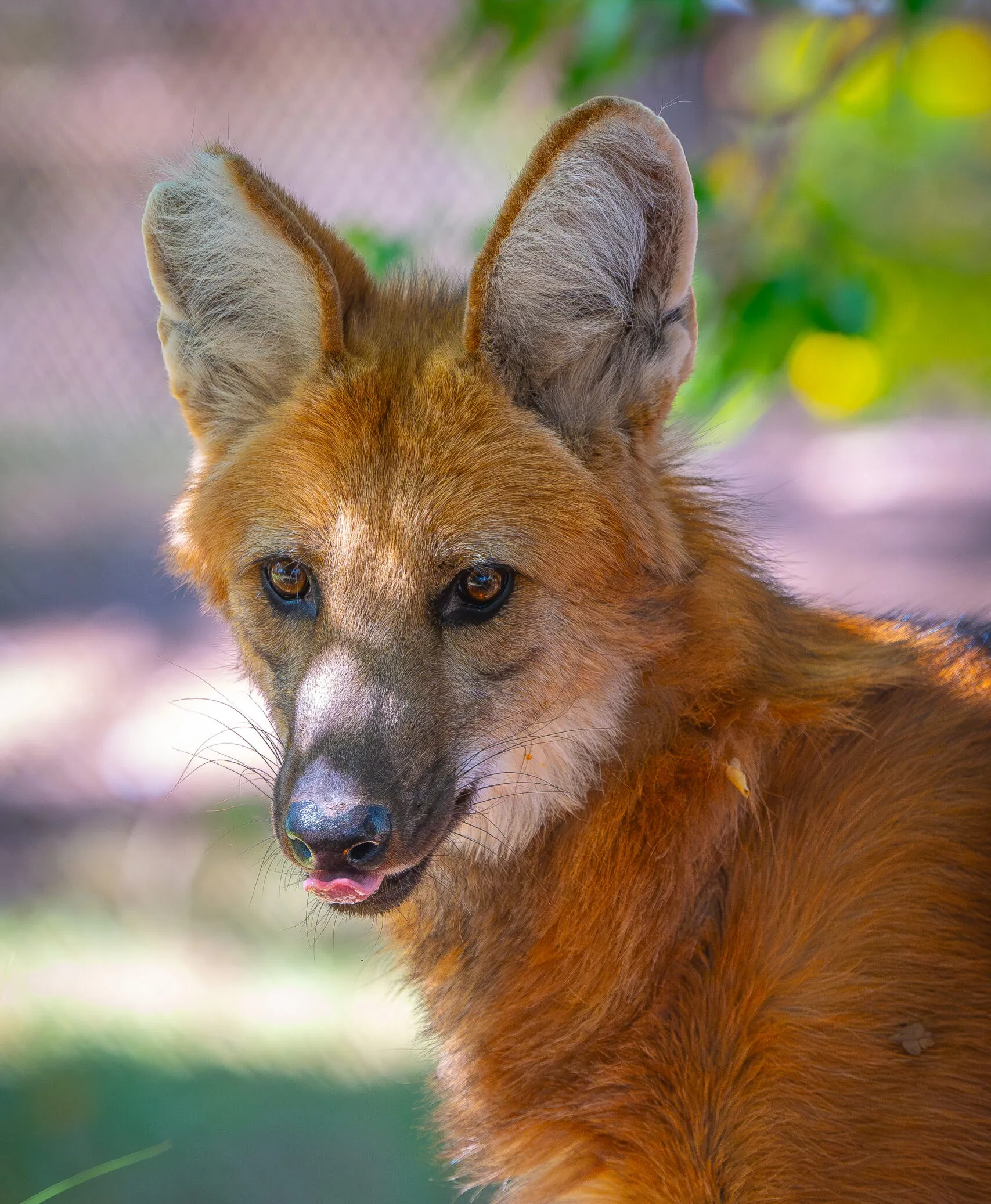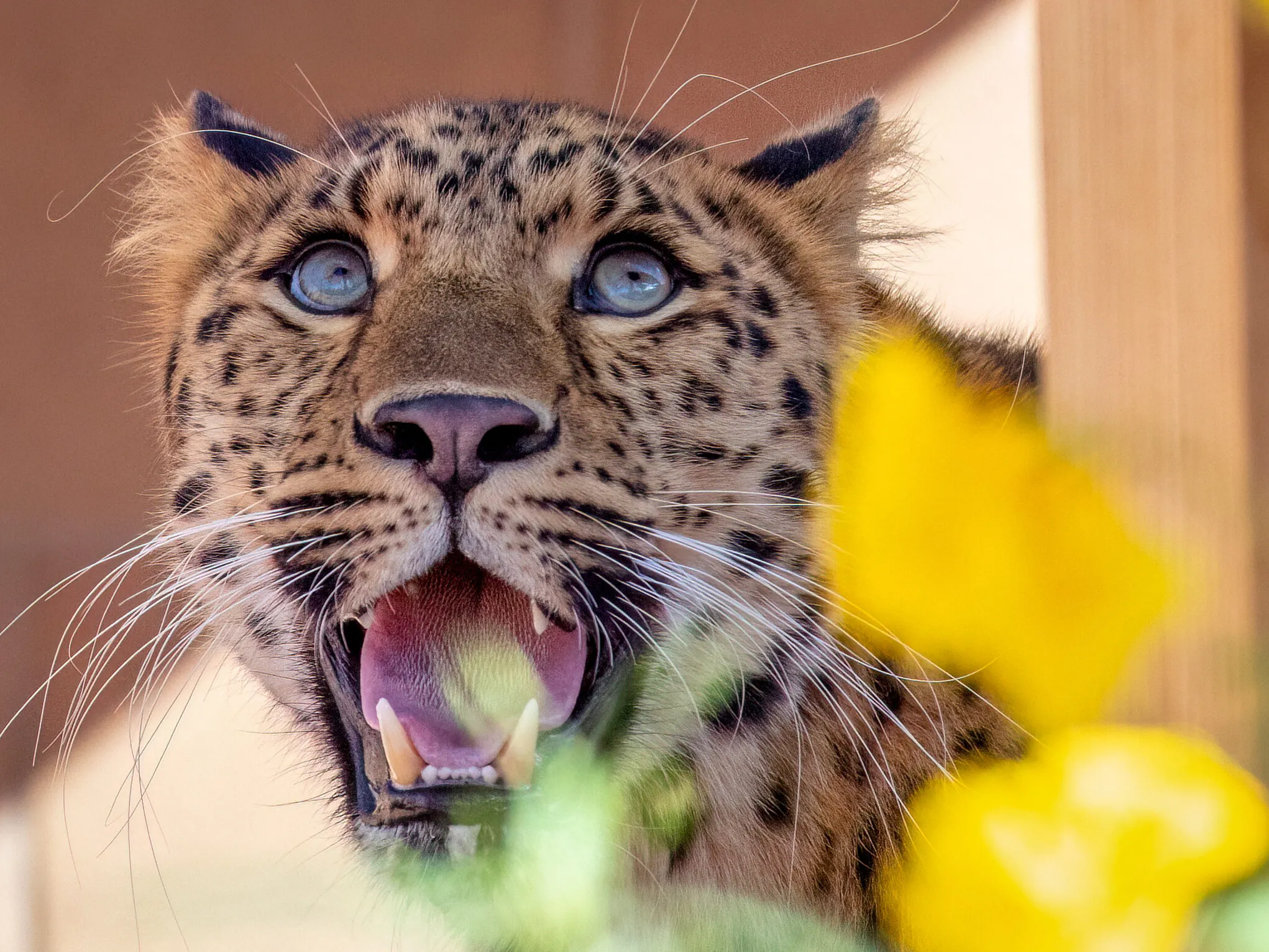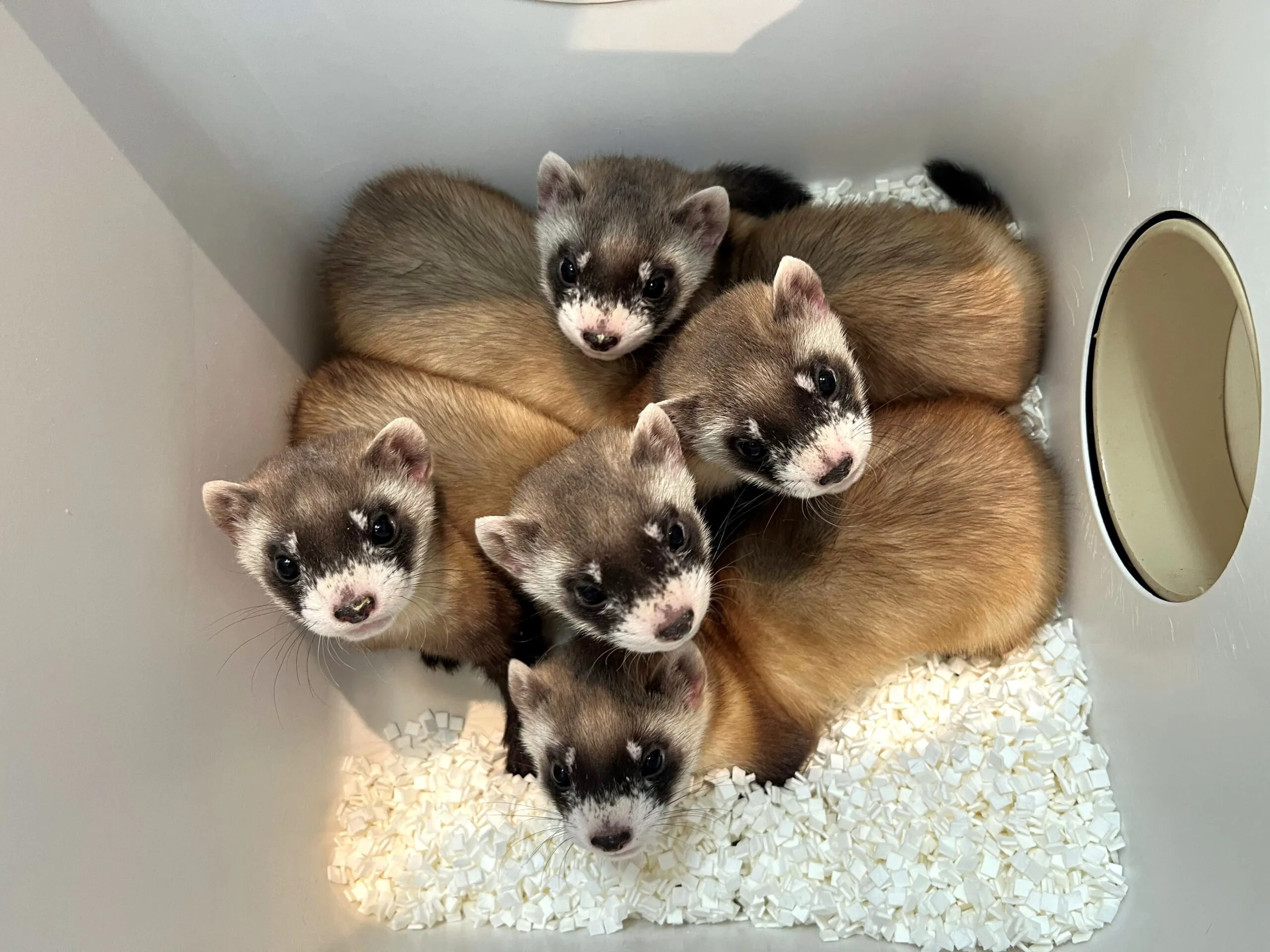Maned Wolf
Chrysocyon brachyurus
I am Unique
With their foxlike heads, reddish-brown fur, and long, dark legs, maned wolves look a lot like foxes, but they’re not. And despite their name, they’re not technically wolves either. Maned wolves are so genetically unique that many scientists believe them to be the lone survivors of a large group of prehistoric South American canine species.
Their extra-long legs are useful for navigating the tall grasslands of their habitat, and they have a distinct strip of black fur down the center of their neck and back that stands erect and looks like a mane when they feel threatened. Even their tracks are unique as their third and fourth toes are partially fused, leaving the impression of a heart.
I Have Nicknames
Maned wolves are sometimes called “fruit wolves” due to their fondness for small, tomato-like berries commonly known as wolf apples. This fruit, along with other fruits and vegetables, makes up about 50% of their diet. They also eat small animals, using their big ears to locate prey in grasses, then stomping their feet to flush out their prey. Other nicknames include “skunk foxes” or “skunk wolves” thanks to their habit of marking their territory with potent-smelling urine and feces.
I Made History
A maned wolf was the first wild animal ever treated with stem cell therapy. In 2011, a female maned wolf was run over by a truck in Brazil and suffered broken bones and other injuries. A passerby brought her to the Brazilian National Zoo where stem cells were implanted near her broken bones. She was back on her feet within hours, and her broken leg was completely healed in three weeks.

Diet: small animals, eggs, fruits, plants
Zoo Diet: formulated feed, veggies, fruit, hard-boiled eggs, whole prey (rats) and fish (capelin)
Habitat: grasslands, scrub forests
Height at Shoulder: 35 – 39 in.



Plan your visit today!
The Phoenix Zoo is one of the largest non-profit zoos in the U.S., caring for over 3,000 animals, with nearly 400 species represented, including many threatened/endangered species.

Plan your visit today!
The Phoenix Zoo is one of the largest non-profit zoos in the U.S., caring for over 3,000 animals, with nearly 400 species represented, including many threatened/endangered species.








